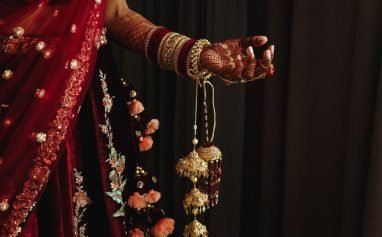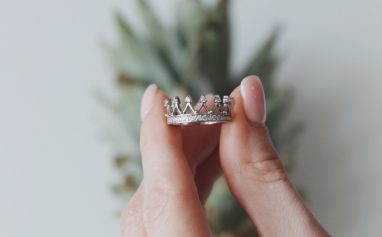Role of Jewelry in Rituals and Customs
1. Bridal Adornments:
Indian weddings are marked by elaborate rituals where jewelry holds significant importance, especially for the bride. The bridal ensemble is incomplete without traditional jewelry sets, which include necklaces, earrings, bangles, maang tikka (forehead ornament), nose ring (nath), and anklets. These pieces are selected with great care to complement the bridal attire and enhance the bride’s beauty on her special day.
2. Symbolism of Jewelry:
Each piece of bridal jewelry symbolizes blessings, prosperity, and marital bliss. The mangalsutra, a sacred necklace worn by the bride, symbolizes the marital union and is tied by the groom during the wedding ceremony. It signifies the bride’s commitment to her husband and serves as a protective talisman according to Hindu customs.
3. Regional Variations:
India’s diverse cultural landscape influences wedding jewelry styles and traditions. For example, South Indian brides typically wear heavy gold jewelry with intricate temple motifs, reflecting regional craftsmanship and religious symbolism. In contrast, North Indian brides may opt for elaborate Kundan or Polki sets, known for their intricate gemstone settings and Hindu-inspired designs.
Historical and Cultural Significance
1. Heritage and Tradition:
Jewelry in Indian weddings embodies centuries-old traditions passed down through generations. Each piece of jewelry often carries familial significance, being heirlooms handed down from mothers and grandmothers, symbolizing continuity and familial bonds.
2. Spiritual Blessings:
During wedding ceremonies, jewelry is believed to invoke divine blessings and protect the couple from negative influences. The exchange of rings (engagement and wedding bands) symbolizes eternal love and commitment, while toe rings (bichwa or metti) worn by the bride symbolize fertility and prosperity.
Craftsmanship and Contemporary Trends
1. Traditional Techniques:
Indian wedding jewelry showcases exquisite craftsmanship, employing traditional techniques such as Kundan, Meenakari, Jadau, and Nakashi. Each technique adds intricate detailing and vibrant colors to jewelry pieces, making them prized possessions for brides and families.
2. Contemporary Adaptations:
Modern brides often blend traditional jewelry with contemporary designs to reflect personal style preferences. Fusion jewelry, combining traditional craftsmanship with modern aesthetics, has gained popularity among brides seeking unique and personalized wedding ensembles.
Significance Beyond Adornment
Jewelry in Indian weddings transcends its role as mere adornment—it signifies cultural identity, familial ties, and auspicious beginnings. From the intricate detailing of temple jewelry to the regal elegance of Polki and Kundan sets, each piece embodies craftsmanship and symbolism that resonate deeply within Indian traditions. As weddings continue to evolve with changing times, jewelry remains a timeless expression of love, tradition, and celebration in Indian culture.
Conclusion
Jewelry is an integral part of Indian weddings, symbolizing tradition, cultural heritage, and the sacred bond of marriage. From ancient rituals to contemporary trends, jewelry plays a vital role in enhancing the bride’s beauty and conveying blessings of prosperity and happiness. As India’s rich cultural tapestry continues to influence global fashion, wedding jewelry remains a cherished tradition that embodies the essence of love, unity, and familial bonds.
Also Read: Festive Jewelry: Navratri, Diwali, and Other Celebrations






